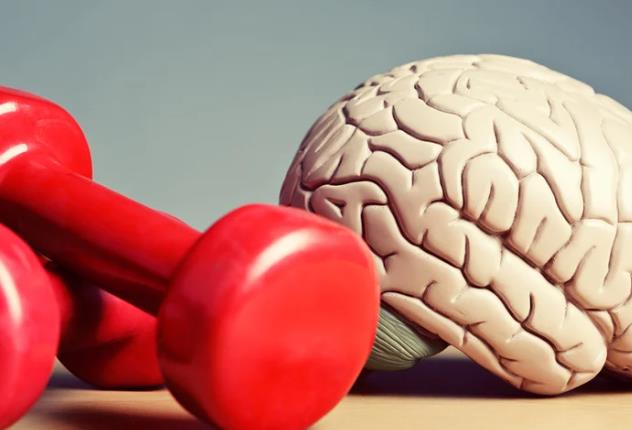Welcome to the fascinating world of Exercise Science, where movement and health intersect to unlock the potential of the human body. Have you ever wondered about the science behind those post-workout endorphins or how athletes achieve peak performance? Well, buckle up as we delve into what Exercise Science is all about and why it’s more than just breaking a sweat at the gym. Join us on this journey to discover the secrets behind exercise, health, and human performance!
What is Exercise Science?

Exercise Science, also known as kinesiology or exercise physiology, is a multidisciplinary field that studies the effects of physical activity, exercise, and movement on the human body. It encompasses a broad range of scientific disciplines, including physiology, biomechanics, anatomy, psychology, nutrition, and epidemiology, among others. Exercise Science seeks to understand how the body responds, adapts, and benefits from various forms of physical activity across different populations and settings.
What Exercise Science is NOT?
Understanding what Exercise Science is not can provide clarity on its scope and boundaries. Here are some key points:
- Not Just About Exercise Prescription: Exercise Science goes beyond prescribing workout routines. While it involves designing exercise programs tailored to individual needs, it also encompasses research, analysis, and application of scientific principles to understand human movement, physiology, and performance.
- Not Limited to Physical Fitness: While Exercise Science certainly contributes to physical fitness, it’s not confined to it. It encompasses a broader spectrum, including studying exercise’s effects on mental health, rehabilitation from injuries, chronic disease management, and even performance optimization in professional athletes.
- Not Exclusive to Gym Settings: Exercise Science isn’t solely applicable in gym settings. Its principles are relevant in various environments, including clinical settings for rehabilitation, sports arenas for performance enhancement, corporate wellness programs, and community health initiatives.
- Not Just About Building Muscles: While strength training is a significant component, Exercise Science isn’t solely focused on building muscles. It encompasses various exercise modalities, including cardiovascular exercise, flexibility training, neuromuscular coordination, and balance exercises, to promote holistic health and well-being.
- Not a Substitute for Medical Advice: Exercise Science professionals provide guidance on physical activity, but they are not medical doctors. They work collaboratively with healthcare providers to design safe and effective exercise programs, particularly for individuals with pre-existing medical conditions or special needs.
- Not Static or One-Size-Fits-All: Exercise Science acknowledges individual differences in fitness levels, goals, and abilities. It emphasizes personalized approaches to exercise prescription based on factors such as age, fitness level, medical history, and preferences. It evolves with advancements in research and technology, continually refining best practices.
- Not Just About Individual Performance: While Exercise Science does contribute to enhancing individual performance, it also considers broader societal implications. This includes promoting physical activity guidelines, advocating for policy changes to create supportive environments for exercise, and addressing disparities in access to fitness resources and opportunities.
What is Sports Medicine?

Sports medicine is a subspecialty of medicine that deals with the avoidance, identification, management, and recuperation of ailments and injuries associated with physical activity and sports. It encompasses a multidisciplinary approach, drawing on expertise from various medical specialties, including orthopedics, physical therapy, rehabilitation, cardiology, neurology, and nutrition.
The primary goal of sports medicine is to optimize athletic performance, prevent injuries, and promote the overall health and well-being of athletes and active individuals. Sports medicine practitioners work with athletes of all ages and skill levels, from recreational enthusiasts to professional athletes, across a wide range of sports and physical activities.
Key aspects of sports medicine include:
- Injury Prevention: Sports medicine professionals focus on identifying risk factors for injuries and implementing preventive strategies to reduce the likelihood of athletic injuries. This may involve biomechanical assessments, strength and conditioning programs, proper technique training, and education on injury prevention strategies.
- Diagnosis and Treatment: When injuries occur, sports medicine physicians are trained to accurately diagnose the nature and extent of the injury. This may involve clinical evaluations, imaging studies (such as X-rays, MRI scans, or ultrasound), and diagnostic procedures. Treatment modalities vary depending on the injury but may include medications, physical therapy, rehabilitation exercises, bracing, or surgical intervention.
- Rehabilitation and Return to Play: Sports medicine professionals play a critical role in guiding athletes through the rehabilitation process following injury or surgery. They develop individualized rehabilitation programs aimed at restoring function, strength, flexibility, and proprioception to facilitate a safe return to sport or physical activity.
- Performance Enhancement: In addition to injury management, sports medicine practitioners work to optimize athletic performance through techniques such as biomechanical analysis, strength and conditioning programming, nutritional counseling, hydration strategies, and sports psychology interventions.
- Concussion Management: Sports medicine specialists are trained to recognize and manage concussions, a common injury in contact sports. They employ standardized protocols for the assessment, diagnosis, and management of concussions, ensuring a safe and gradual return to play while prioritizing the long-term health and well-being of the athlete.
- Exercise Prescription for Health Promotion: Sports medicine extends beyond the realm of competitive athletics to promote physical activity and exercise as essential components of overall health and wellness. Sports medicine physicians prescribe exercise programs tailored to individual needs, goals, and medical conditions to improve cardiovascular health, muscular strength, flexibility, and metabolic function.
Are exercise science and sports medicine the same?
Exercise science and sports medicine are closely related fields, but they have distinct focuses and areas of expertise.
Exercise science primarily deals with the study of human movement, physiology, and biomechanics in the context of exercise and physical activity. It encompasses a broad range of scientific disciplines, including exercise physiology, biomechanics, motor control, anatomy, psychology, and nutrition. Exercise science professionals work to understand how the body responds to exercise, adapts to training stimuli, and benefits from physical activity across various populations and settings. They may be involved in areas such as designing exercise programs, conducting research on exercise physiology, or promoting physical activity for health and wellness.

Sports medicine, on the other hand, is particularly concerned with the avoidance, identification, management, and recuperation of ailments and injuries associated with physical activity and sports. It encompasses a multidisciplinary approach, drawing on expertise from various medical specialties such as orthopedics, physical therapy, rehabilitation, cardiology, neurology, and sports nutrition. Sports medicine professionals work with athletes of all levels and ages to optimize athletic performance, prevent injuries, manage medical conditions, and facilitate safe return-to-play protocols. They may also be involved in areas such as concussion management, injury rehabilitation, and performance enhancement strategies for athletes.
While there is an overlap between exercise science and sports medicine, with both fields contributing to the promotion of physical activity, injury prevention, and performance optimization, they have distinct focuses and areas of expertise. Exercise science is more broadly focused on the scientific study of human movement and exercise physiology, while sports medicine is more clinically oriented toward the medical care of athletes and active individuals.
The History and Evolution of Exercise Science
Exercise Science has a rich history that dates back centuries. It all began with ancient civilizations recognizing the connection between physical activity and health. From Greek athletes training for the Olympics to Roman gladiators preparing for battle, the importance of fitness was evident.
In the 19th century, scientists like Dr. Dudley Allen Sargent laid the groundwork for modern exercise science by studying human movement and physiology in more detail. As research progressed, so did our understanding of how exercise impacts not only our muscles but also our hearts, lungs, and overall well-being.
The evolution of exercise science saw breakthroughs in areas like sports performance optimization, rehabilitation techniques, and preventative medicine through physical activity. Today, researchers continue to explore new frontiers in this field to enhance athletic performance, improve fitness outcomes, and promote overall health.
The Importance of Exercise for Overall Health
Exercise is not just about getting a toned physique or fitting into your favorite jeans; it plays a vital role in maintaining overall health and well-being. Regular physical activity has been linked to numerous health benefits, including reducing the risk of chronic diseases like heart disease, diabetes, and obesity.
Engaging in exercise helps strengthen muscles, improve cardiovascular health, and boost metabolism. It also promotes better mental health by reducing stress levels and improving mood through the release of endorphins. Additionally, staying active can enhance sleep quality and increase energy levels throughout the day.
Regular physical activity is essential for maintaining a healthy weight, reducing inflammation in the body, and improving immune function. Whether it’s going for a brisk walk, hitting the gym, or practicing yoga at home – finding an exercise routine that works for you can significantly impact your overall health in positive ways. So lace up those sneakers and prioritize movement for a healthier you!
What Does an Exercise Scientist Do?
 Curious about what exactly an exercise scientist does? Well, let’s uncover the mystery behind this fascinating profession. An exercise scientist is like a detective of the human body, investigating how it responds to physical activity. They delve deep into understanding the intricate mechanisms that drive our muscles, heart, and lungs during exercise.
Curious about what exactly an exercise scientist does? Well, let’s uncover the mystery behind this fascinating profession. An exercise scientist is like a detective of the human body, investigating how it responds to physical activity. They delve deep into understanding the intricate mechanisms that drive our muscles, heart, and lungs during exercise.
By conducting research and experiments, they aim to optimize athletic performance and improve overall health outcomes. From analyzing movement patterns to designing personalized workout regimens, these scientists play a crucial role in enhancing physical well-being.
They work closely with athletes, patients recovering from injuries, or even individuals looking to boost their fitness levels. With their expertise in biomechanics, physiology, and nutrition, they are the guiding force behind many successful training programs.
So next time you hit the gym or lace up your running shoes, remember that there’s a whole team of dedicated exercise scientists working behind the scenes to help you reach your full potential.
Areas of Study in Exercise Science
In the vast field of Exercise Science, there are diverse areas of study that delve deep into understanding the human body’s response to physical activity. One key area is exercise physiology, focusing on how the body adapts and functions during exercise. This includes examining cardiovascular responses, muscle metabolism, and respiratory dynamics.
Another crucial aspect is biomechanics, which explores the mechanics of human movement to optimize performance and prevent injuries. Understanding factors like joint angles, forces applied to muscles, and movement patterns is essential in this discipline.
Sport psychology delves into the mental aspects of sports and exercise, including motivation techniques, goal-setting strategies, and psychological skills training for athletes at all levels. Nutrition science plays a vital role in Exercise Science as well, studying how diet influences physical performance and overall health outcomes.
Additionally, motor learning and control investigate how individuals acquire motor skills through practice and feedback mechanisms. These various areas collectively contribute to a comprehensive understanding of Exercise Science’s multidimensional nature.
Career Opportunities in Exercise Science
Have you ever considered turning your passion for fitness and health into a rewarding career? In the field of exercise science, there is a wide range of career opportunities waiting for enthusiastic individuals like you.
As an exercise scientist, you could work in clinical settings, helping patients recover from injuries or manage chronic conditions through tailored exercise programs. Alternatively, you might choose to focus on sports performance enhancement by working with athletes at various levels.
Opportunities also exist in corporate wellness programs where you can promote employee health and productivity through innovative fitness initiatives. Additionally, roles in research institutions allow exercise scientists to contribute to cutting-edge studies that advance our understanding of human movement and its impact on health.
Whether it’s designing personalized training plans, conducting fitness assessments, or educating others on the benefits of physical activity – a career in exercise science offers diverse pathways to make a difference in people’s lives while pursuing your passion for wellness.
Advancements and Future of Exercise Science

Exercise science is a field that continues to evolve rapidly, driven by advancements in technology and research. As we look towards the future of exercise science, exciting possibilities emerge. One significant trend is the integration of wearable technology and data analytics into personalized fitness programs. These tools can provide valuable insights into individual performance and health metrics.
Moreover, with the growing emphasis on preventive healthcare, exercise science professionals are exploring new ways to leverage exercise as medicine. Research is ongoing in areas like precision nutrition and tailored workout plans based on genetic markers. The future also holds promise for virtual reality (VR) and augmented reality (AR) applications in enhancing athletic performance through immersive training environments.
Additionally, as our understanding of biomechanics deepens, innovations in equipment design and rehabilitation techniques are likely to revolutionize how we approach physical activity and injury prevention. With these advancements shaping the landscape of exercise science, the potential for optimizing human performance and well-being seems boundless.
Conclusion
Exercise science is a fascinating field that delves into the intricate workings of the human body and how it responds to physical activity. From its historical roots to its current advancements, exercise science plays a crucial role in promoting health, preventing disease, and optimizing athletic performance.
As we continue to uncover new discoveries and technologies in this ever-evolving field, the future of exercise science looks promising. With an increasing emphasis on personalized fitness programs, preventative healthcare strategies, and innovative research methods, the opportunities within exercise science are boundless.
Whether you are passionate about helping others lead healthier lives, improving athletic performance, or conducting groundbreaking research, a career in exercise science offers a rewarding path filled with endless possibilities. So dive into this exciting field and explore all that exercise science has to offer – your journey toward understanding the power of movement starts here!

